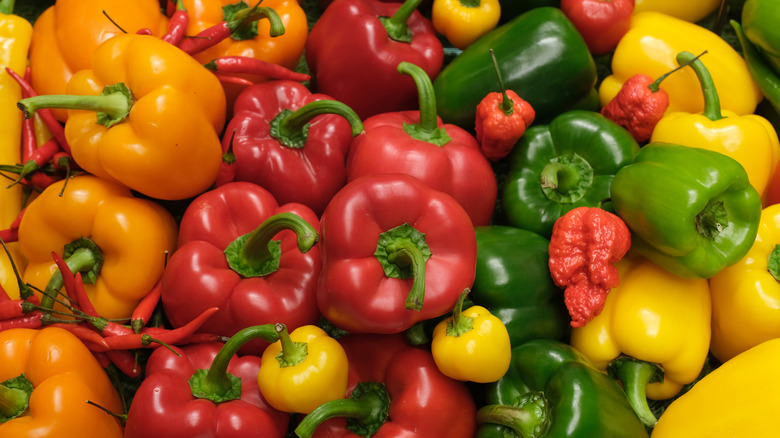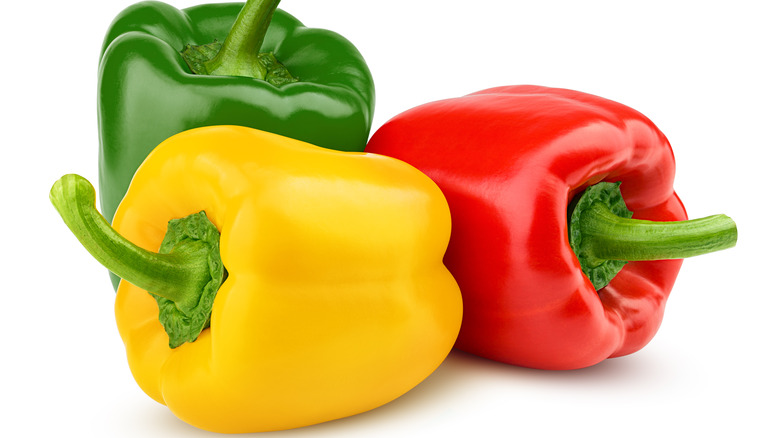This Is What Bell Pepper Colors Really Mean
Whether you're using them sautéed with plenty of spices for a fajita filling, dicing them for inclusion in a pasta salad, or simply chopping them for a colorful vegetable platter, chances are bell peppers are a common item on your grocery list. However, have you ever wondered about the difference between the various colors, and whether your choice actually matters in your dish?
The main difference between the types of bell peppers is the stage of ripeness they're at. Think of green bell peppers kind of like the starting point for all bell peppers — the reason they're often less expensive is that they're harvested sooner and can reach your plate quicker because of the lessened ripening time (via Tasting Table). They have that same bell pepper taste, but the lack of ripening means they often have a bit more bitter, or even herbaceous, flavor notes.
At the other end of the spectrum are red bell peppers. They're the peppers that are allowed the most time to ripen, which is why they're so sweet and often skew a bit more fruity than savory before you add in other seasonings and spices. The lengthy ripening time is also the reason that these are likely going to be the most expensive option of all the peppers you see at the store. Yellow and orange fall somewhere between these two on the spectrum — a bit sweeter and often a bit pricier, but not as sweet and costly as red bell peppers.
Does the bell pepper color really matter?
When it comes down to it, the most important thing to consider when you're deciding which color or colors of bell pepper to purchase is just what you're trying to achieve with the ingredient. If you want a bit more of that sweetness in your recipe, red bell pepper is likely the best option, perhaps mixed with some orange and yellow if you want to add a big punch of color to your plate. For other recipes, such as a classic Greek salad, the slightly more bitter, grassy flavor of green bell peppers can complement the other flavors in the dish perfectly.
There are a few other types of bell pepper that you might spot, with hues from dark purple to white. Yet, you're unlikely to come across those at a regular grocery store — they're more of a specialty market or farmers' market offering (via Delishably), so your decision is likely going to be between green, orange, yellow, and red.
The nutritional content is also something you may want to consider. All bell peppers are great, with even the green varieties packing plenty of vitamin C (via Pepper Scale). However, that extra time spent ripening really makes red bell peppers a nutritional powerhouse — they can contain twice as much vitamin C as the green bell peppers, as well as over 10 times the amount of vitamin A and nearly nine times more beta-carotene (via Tasting Table).

